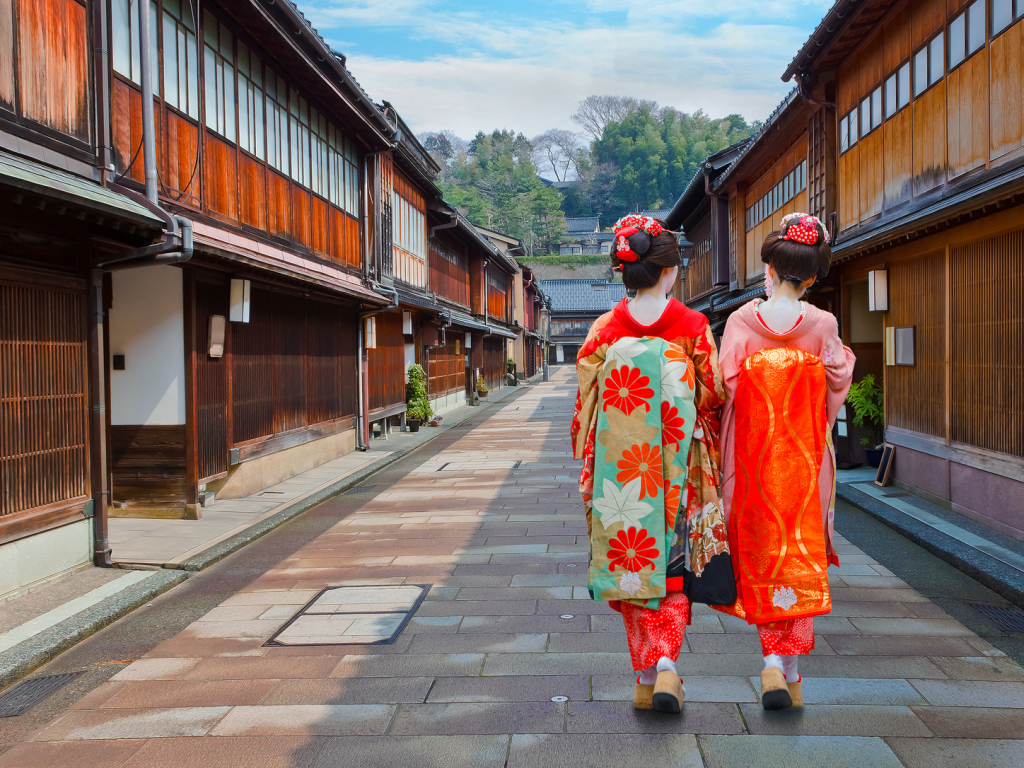Affectionately known as “little Kyoto,” Kanazawa is a rustic city in northern Honshu’s Chubu region. Although not part of the Kansai region, it’s a train ride away from Osaka (just under three hours on the Thunderbird Express) and Kyoto (just over two hours). Like Japan’s former capital, Kanazawa was one of the few major cities not to be bombed during World War II meaning that much of its rich architectural and cultural heritage remains to this day including the Chaya districts (historic entertainment districts with teahouses where geisha perform), and Nagamachi where the city’s samurai once resided.
A Stroll Through Time
Nagamachi is a pleasant area for a stroll with winding lanes, canals, and ancient samurai houses. The main attraction is the old Nomura Residence which features family heirlooms, antiques, and artefacts from the Edo period. There are three old teahouse districts in Kanazawa; Higashi Chayagai (Eastern Teahouse District), Kazuemachi and Nishi Chayagai (Western Teahouse District). Higashi Chayagai is the most popular with the Shima and Kaikaro teahouses open to the public. The Hazuka Gold Leaf Store is also worth visiting.
If you want to avoid the crowds Nishi Chayagai would be a better option and it has the advantage of being a short walk away from Myoryuji (a temple also known as Ninjadera, even though it’s not associated with any ninja clans), where you’ll find secret backdoors, false ceilings, hatches, and other hidden items. The complex is built around a 25-meter deep well that is, according to legend, said to be connected to Kanazawa Castle via a tunnel (though no living person has gone deep enough to confirm this). The castle itself is arguably the city’s most iconic landmark, having played a major role in Kanazawa’s history. Most of the castle burned down in 1881 (just two storehouses and the Ishikawa-mon gate remained), so in 1996 the local government began a campaign to restore it to something like its former glory including new gates, a moat, and many watchtowers.
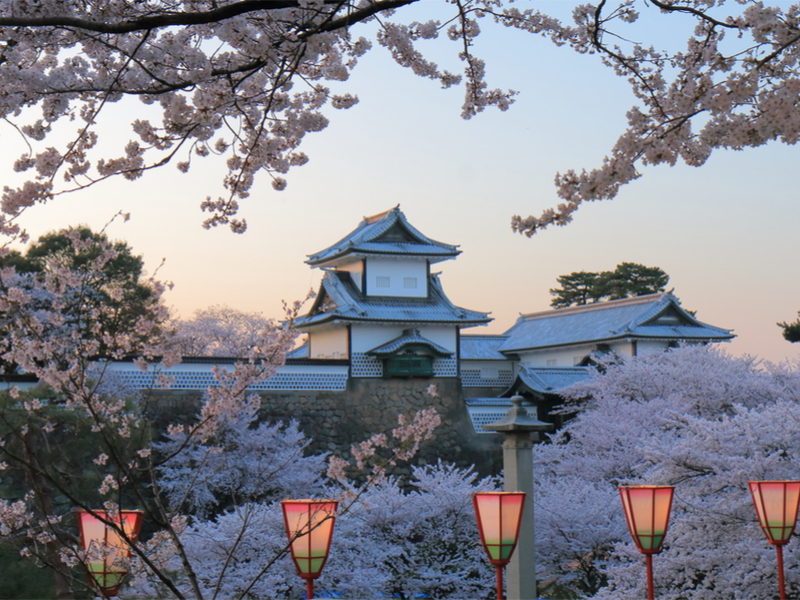
Kanazawa Castle
Experience Radiance and the Pristine
Even more impressive than the castle is the nearby garden, Kenroku-en (meaning the garden of six sublimities), which is considered one of the three great landscape gardens of Japan along with Kairaku-en (Mito) and Koraku-en (Okayama). It’s a memorable place to visit whatever the season, though is arguably at its most radiant in winter when covered under a blanket of pristine snow. Highlights include the huge pond, stone lanterns and Japan’s oldest fountain. Those interested in something more modern should try the 21st Century Museum of Contemporary Art, an innovative facility with a unique design that’s probably most famous for its installation swimming pool, which you can enter without getting wet. Another place that shouldn’t be missed is the Omi-cho Market. Established over 280 years ago, it’s a bustling and colorful area with many fish, vegetable, and grocery stores.
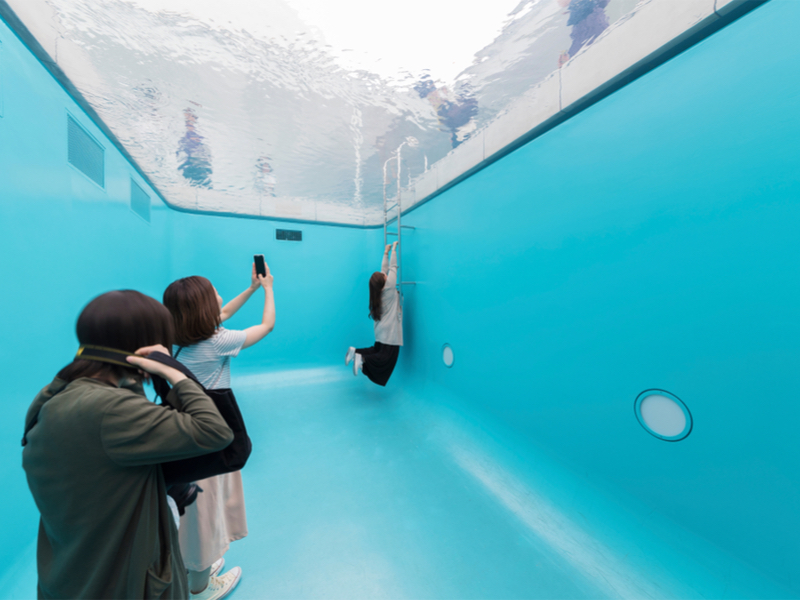
“The Swimming Pool” by Leandro Erlich at the 21st Century Museum of Contemporary Art
An Arty Stay at UAN kanazawa
Where to stay while you’re here? More than just a luxurious and aesthetically pleasing place to stay, UAN kanazawa is a unique hotel with a spacious lounge that gives guests the opportunity to get in touch with their creative side through workshops. Ideally located in the center of the city, the hotel is just a short walk from Kanazawa Castle and the lively Omi-cho Market. It opened in December 2017 and proved an immediate hit with guests due to its elegant and modern design that embraces minimalism.
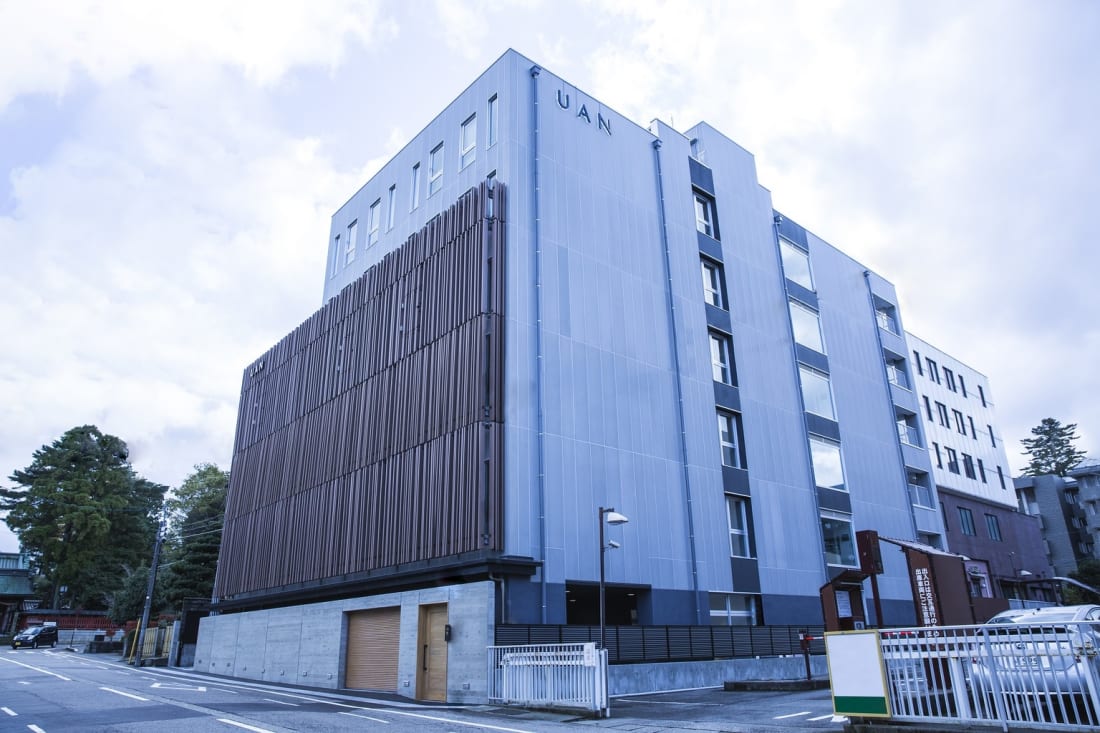
There are a range of amenities at the hotel including a gym, nursing room and an area to do laundry. However, what really stands out when you enter UAN kanazawa is the Hare-no-ma lounge, a stylish space that drew inspiration from Kanazawa’s numerous tea houses. Here you can relax, or at certain times engage in activities, while surrounded by a variety of delightful artistic creations.
Scenery and Relaxation Enhanced by Rain
One of the most impressive features of the lounge is the calligraphic sculpture called Rain by renowned artist Sisyu. It was previously exhibited in the underground hall of the Louvre Museum in Paris. Her Cubic calligraphy piece, “Clear View Post Rain,” is also on display in the Hare-no-ma lounge along with some Kanazawa washi paper art and a creative piece of artwork, titled “Rain and Rainbow Threads,” celebrating the famous scenic rain for which the city is known.
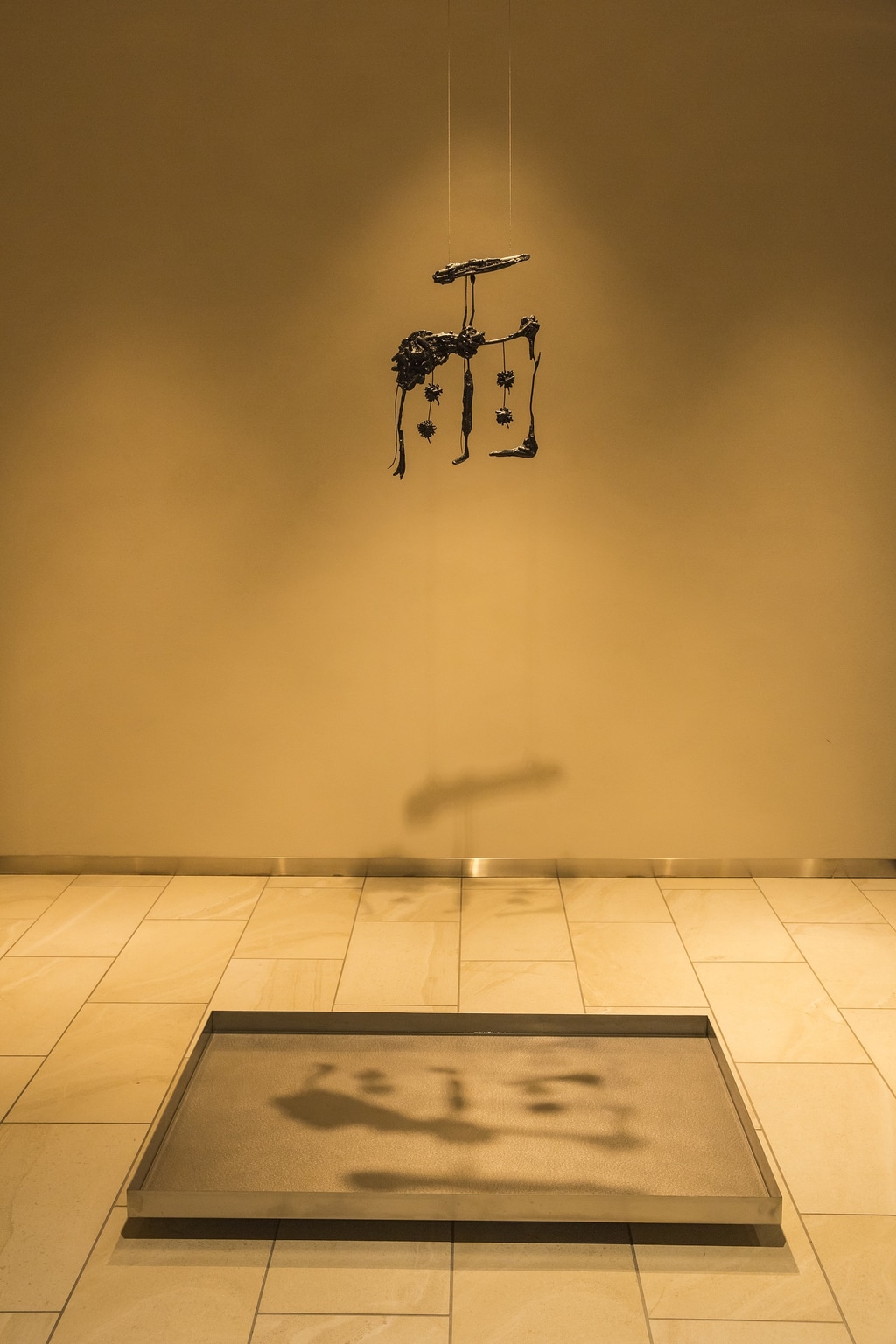
Seen as big part of Kanazawa’s charm, rain is one of the main themes of the hotel. In fact, the kanji used for UAN (雨庵) translates as “rain retreat.” For many people being holed up in a hotel on a wet day can be frustrating, but that’s certainly not the case for guests at UAN kanazawa. Hare-no-ma is a wonderful setting to sit back, relax and let the hours pass you by. As well as a library, there’s a 24-hour hojicha (roasted green tea) service, a sake bar (for a fee; open 3pm-12am) and complimentary noodles available between 9pm and 11pm every night.
A Feast for the Senses
Workshops at Hare-no-ma provide guests with the opportunity to try their hand at decorating pottery or creating mizuhiki paper art. The former costs ¥3,000, which includes one small serving dish or sake cup, plus shipping. Prices for the latter vary between ¥1,500 and ¥2,500 depending on the paper string product. More information is available on the hotel website.
From the “living room” on the first floor to the 47 guest rooms on the other five, UAN kanazawa is full of charm and sophistication. Each room is spacious, trendy, and comfortable. For those willing to splash out a little more, a room with a courtyard and terrace comes highly recommended. Both a Japanese-style and Western-style breakfast (additional fee charged) is available between 7am and 9:30am. Kaga vegetables, the generic name for 15 kinds of vegetables cultivated in Kanazawa’s suburbs since 1945, are well worth trying.
We’d also suggest taking home a UAN scent box as a souvenir. The scent of the box, which has a base of aromatic sandalwood blended with 12 different ingredients, is said to evoke the smell of a stone pavement that has been dampened by the rain. It’s a rare item that will conjure up memories of an inspiring rainy day in Kanazawa.
For UAN kanazawa’s contact details, see our Concierge listing.
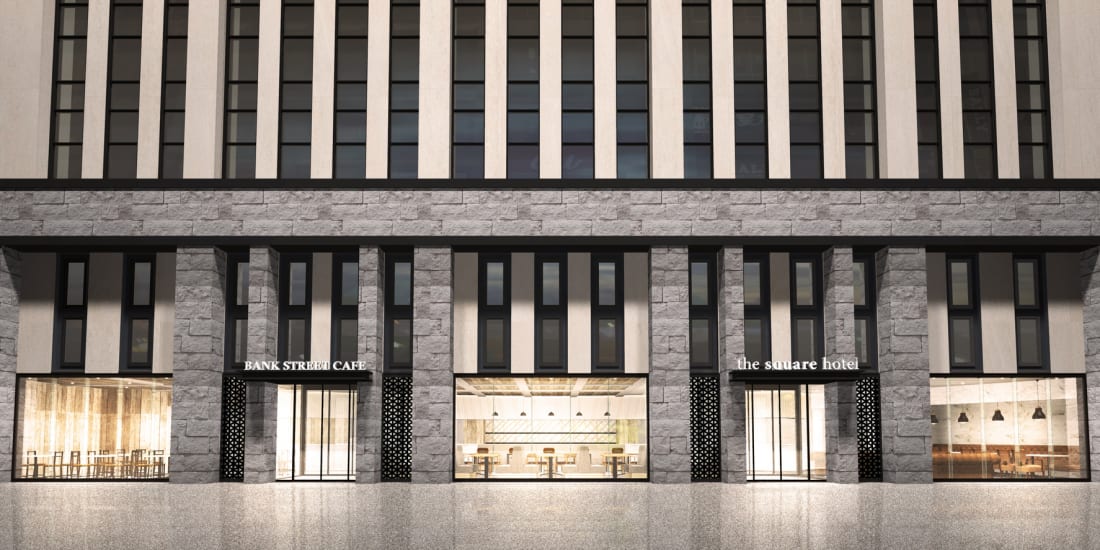
the square hotel
NEW OPENING: the square hotel
Set to open branches in Kanazawa and Tokyo in autumn 2018, the square hotel aims to encourage communication and create connections. Spreading a new style of hotel throughout Japan, Solare Hotels & Resorts Co., Ltd aims to create accommodations that have a deep connection with the city or town in which they are located. That’s very much the idea behind the company’s latest brand, the square hotel, a new kind of hotel set to open this autumn. The first two locations will be in Tokyo (near Higashi-ginza Station) and
Kanazawa (near Omi-cho Market).
The concept is to bring communities together through communication like you see in various squares in Europe (hence the name). Artistically designed with oak-colored furniture, both hotels will have public baths, restaurants, spacious rooms and separate fitness rooms for men and women.
More info at www.solarehotels.co.jp/en/
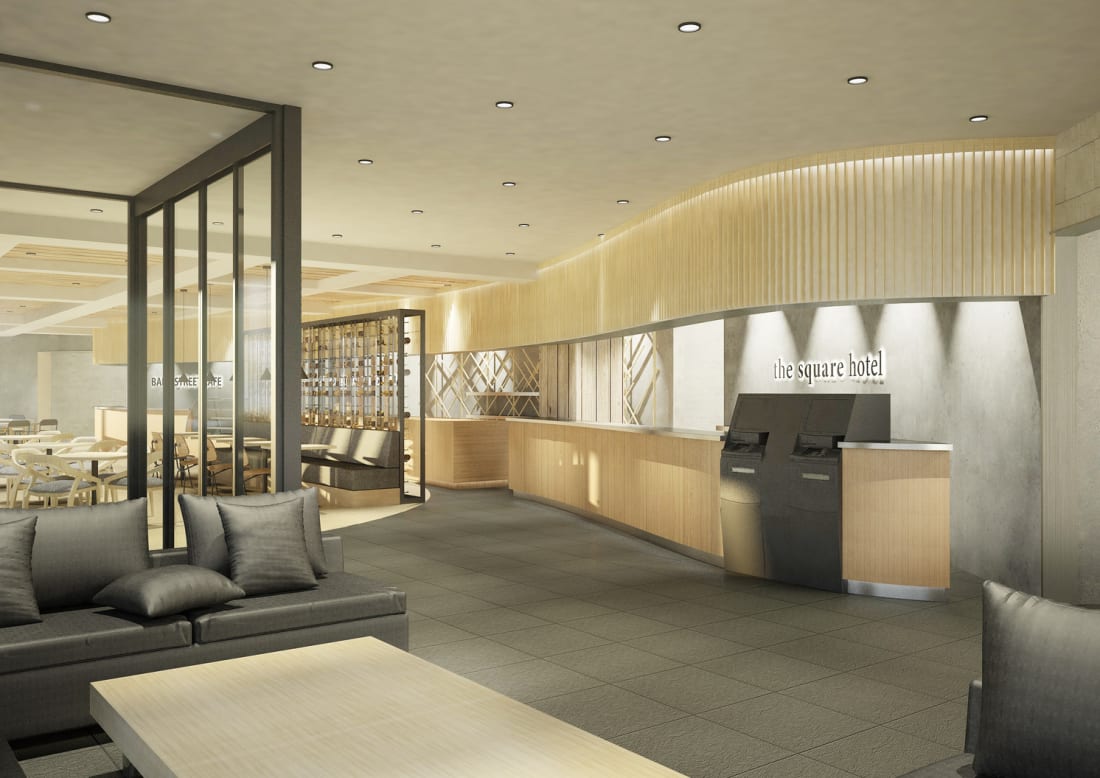
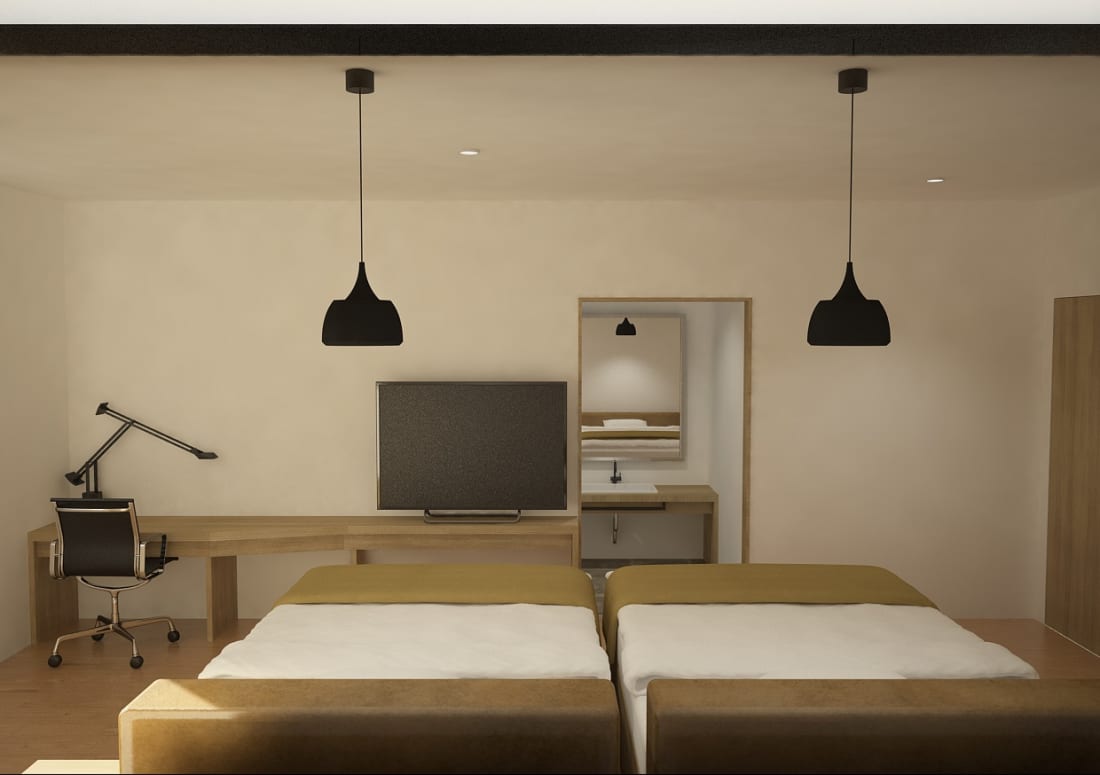
Sponsored Post

